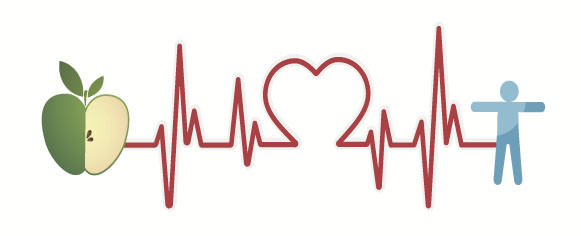Health, Childhood Obesity
Childhood Obesity- Causes & Consequences
Childhood obesity is a serious medical condition that affects children and adolescents.
Summary: 60 Second Read
This article will cover-
- Symptoms of Childhood Obesity
- Causes of Childhood Obesity
- Consequences of Childhood Obesity
- Conclusion

Children who are obese are above the normal weight for their age and height.
Childhood obesity is particularly troubling because the extra pounds often start children on the path to health problems that were once considered adult problems — diabetes, high blood pressure and high cholesterol. Many obese children become obese adults, especially if one or both parents are obese. Childhood obesity can also lead to poor self-esteem and depression.
One of the best strategies to reduce childhood obesity is to improve the eating and exercise habits of your entire family. Treating and preventing childhood obesity helps protect your child's health now and in the future.
Symptoms
Not all children carrying extra pounds are overweight or obese. Some children have larger than average body frames. And children normally carry different amounts of body fat at the various stages of development. So you might not know by how your child looks if weight is a health concern.
While Body Mass Index (BMI), which provides a guideline of weight in relation to height, seems appropriate for differentiating adults, it may not be as useful in children because of their changing body shape as they progress through normal growth. In addition, BMI fails to distinguish between fat and fat-free mass (muscle and bone) and may exaggerate obesity in large muscular children. Waist circumference seems to be more accurate for children because it targets central obesity, which is a risk factor for type II diabetes and coronary heart disease.
Summary- You should not consider BMI as the only indicator of obesity for a child. Waist circumference is more accurate for children.
Causes
It is widely accepted that increase in obesity results from an imbalance between energy intake and expenditure, with an increase in positive energy balance being closely associated with the lifestyle adopted and the dietary intake preferences. However, there is increasing evidence indicating that an individual's genetic background is important in determining obesity risk.
1. Sugary beverages
Sugary drinks are less filling than food and can be consumed quicker, which results in a higher caloric intake. Sugary drinks are often thought of as being limited to soda, but juice and other sweetened beverages also fall into this category.
2. Snack foods
Another factor that has been studied as a possible contributing factor of childhood obesity is the consumption of snack foods. Snack foods include foods such as chips, baked goods, and candy. Snacking has been shown to increase overall caloric intake resulting in increase in weight.
3. Portion size
Portion sizes have increased drastically in the past decade. Consuming large portions, in addition to frequent snacking on highly caloric foods, contribute to an excessive caloric intake. This energy imbalance can cause weight gain, and consequently obesity.
4. Activity level
One of the factors that is most significantly linked to obesity is a sedentary lifestyle. Television viewing among young children and adolescents has increased dramatically in recent years. The increased amount of time spent in sedentary behaviors has decreased the amount of time spent in physical activity.
5. Environmental factors
While extensive television viewing and the use of other electronic media has contributed to the sedentary lifestyles, other environmental factors have reduced the opportunities for physical activity. Opportunities to be physically active and safe environments to be active in have decreased in the recent years.
6. Socio-cultural factors
Socio-cultural factors have also been found to influence the development of obesity. Our society tends to use food as a reward, as a means to control others, and as part of socializing. These uses of food can encourage the development of unhealthy relationships with food, thereby increasing the risk of developing obesity.
7. Family factors
Family factors have also been associated with the increase of cases of obesity. The types of food available in the house and the food preferences of family members can influence the foods that children eat. In addition, family mealtimes can influence the type of food consumed and the amount thereof. Lastly, family habits, whether they are sedentary or physically active, influence the child.
Summary- There are different causes leading to childhood obesity. We must take caution in order to maintain good health.
Consequences
Childhood obesity can profoundly affect children's physical health, social, and emotional well-being, and self esteem. It is also associated with poor academic performance and a lower quality of life experienced by the child. These potential consequences are further examined in the following sections.
1. Medical consequences
Childhood obesity has been linked to numerous medical conditions. These conditions include, but are not limited to, fatty liver disease, sleep apnea, Type 2 diabetes, asthma, hepatic steatosis (fatty liver disease), cardiovascular disease, high cholesterol, cholelithiasis (gallstones), glucose intolerance and insulin resistance, skin conditions, menstrual abnormalities, impaired balance, and orthopedic problems.
2. Socio-emotional consequences
In addition to being implicated in numerous medical concerns, childhood obesity affects children's and adolescent's social and emotional health. Overweight and obese children are often teased and/or bullied for their weight. They also face numerous other hardships including negative stereotypes, discrimination, and social marginalization. These negative social problems contribute to low self esteem, low self confidence, and a negative body image in children and can also affect academic performance.
Summary- Obesity can affect both physically & emotionally. We must take the right steps to fight it.
Conclusion
The growing issue of childhood obesity can be slowed, if society focuses on the causes. There are many components that play into childhood obesity, some being more crucial than others. The kind of environment a child is brought up in and around at home and school can have a major affect on their lifestyle.





































































































